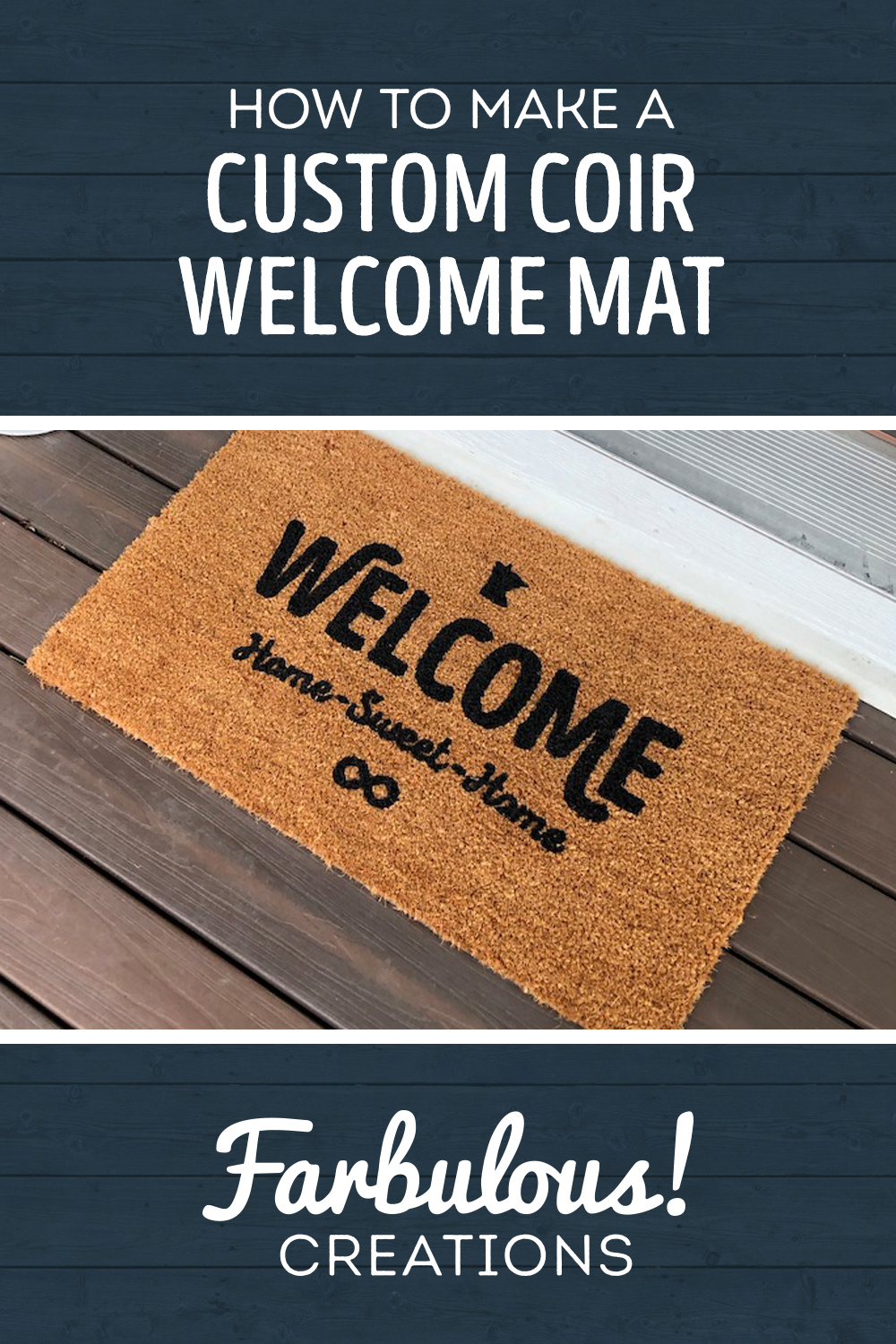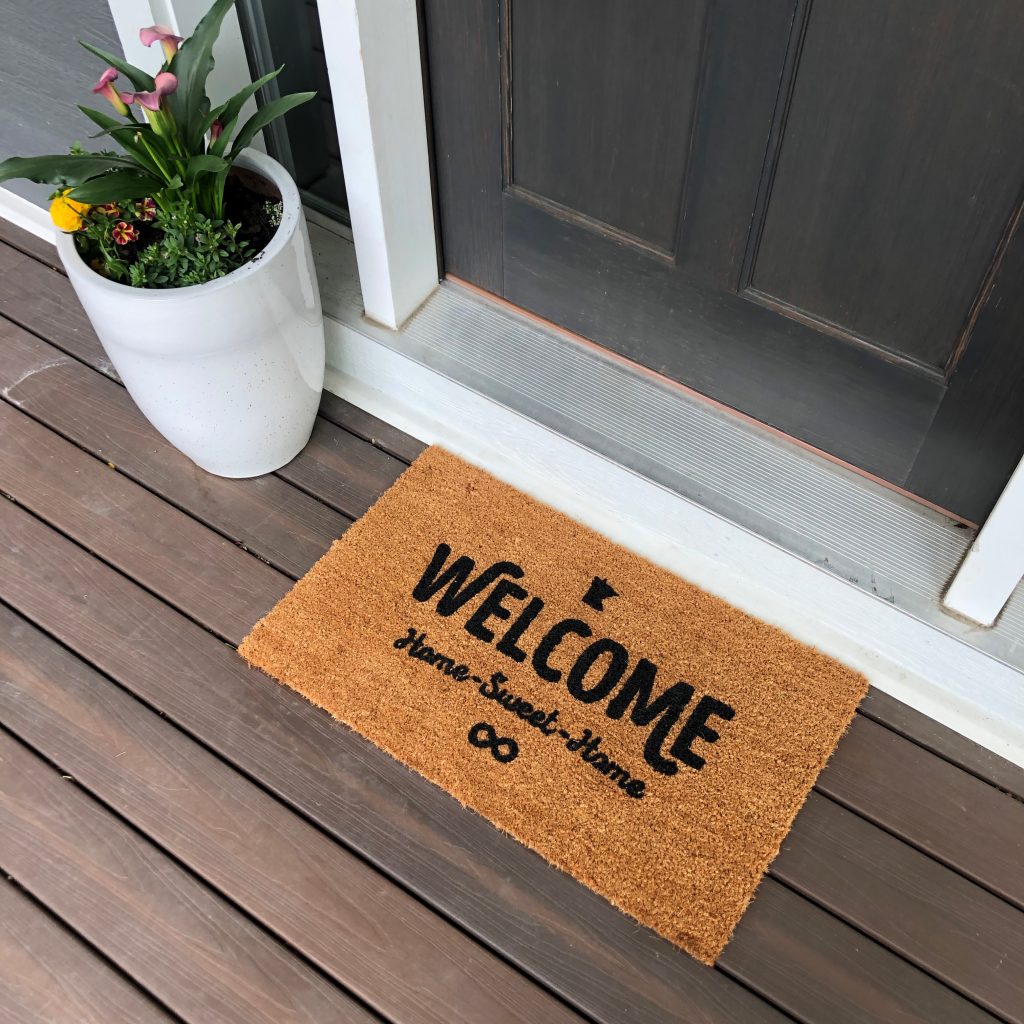
Welcome to Farbulous Creations! My husband and I just bought our first house so I thought it would be kind of fun to make a custom welcome mat for our front porch. Let’s go over how I made it!
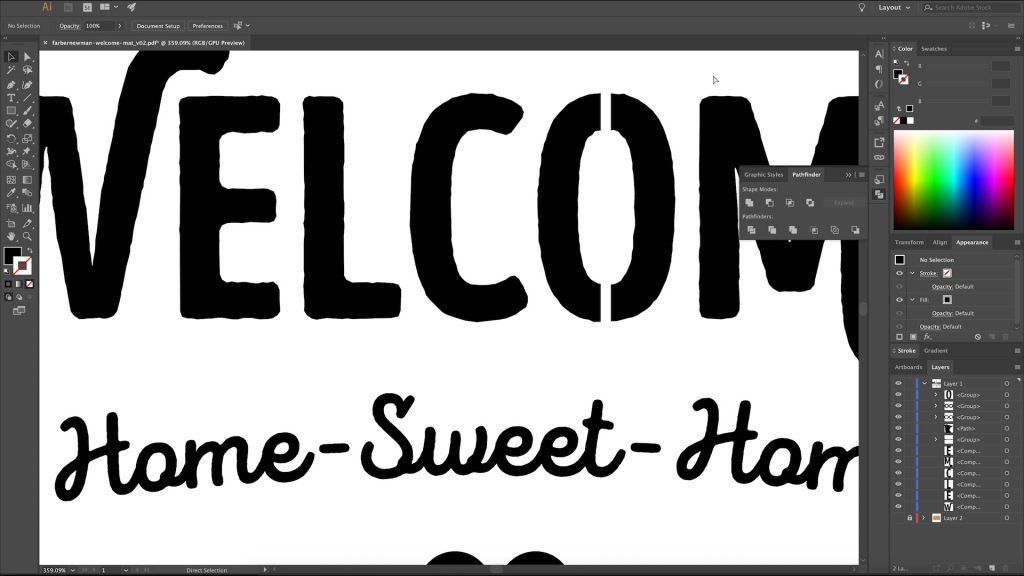
The first thing I had to do is come up with a design on the computer. I’m most comfortable using Adobe Illustrator but you can use whichever program you like, or even freehand it to be honest. Just make sure to add connector lines to the negative space so the holes in the various letters stay in place once its cut out.
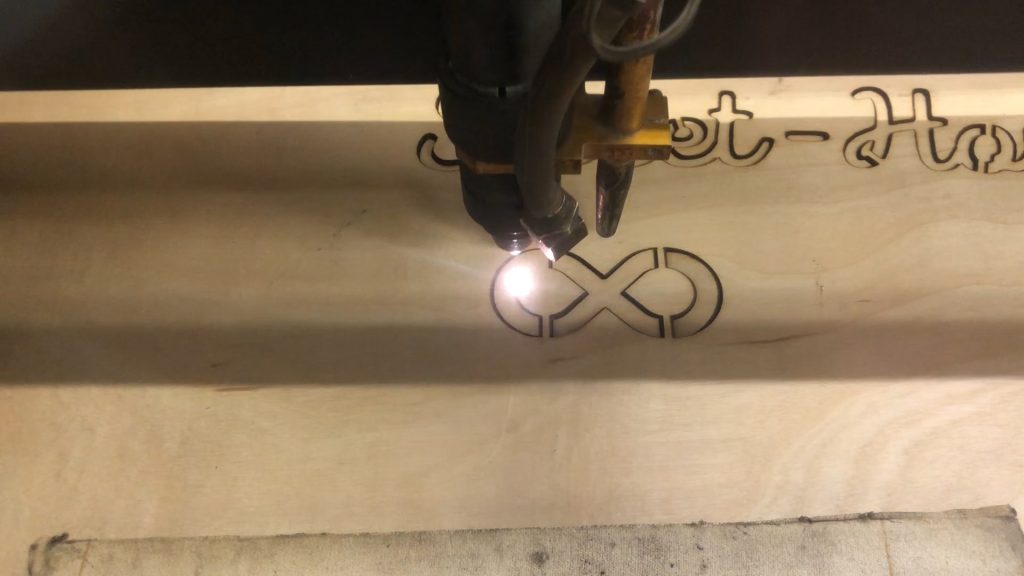
Now this idea to make a custom door mat is by no means an original idea, but I am taking what I think is an original approach to the idea. Lots of people who’ve done this on YouTube use a vinyl cutter to cut out their design. But I’ve never used a vinyl cutter, but I am pretty comfortable with a laser cutter, so I decided to use that. While I’m using a laser at the makerspace I attend, do know that if you don’t have access to one you could just as easily use a scroll saw to make the cuts. It just may take a little longer to make the cuts and you’ll need a steady hand.
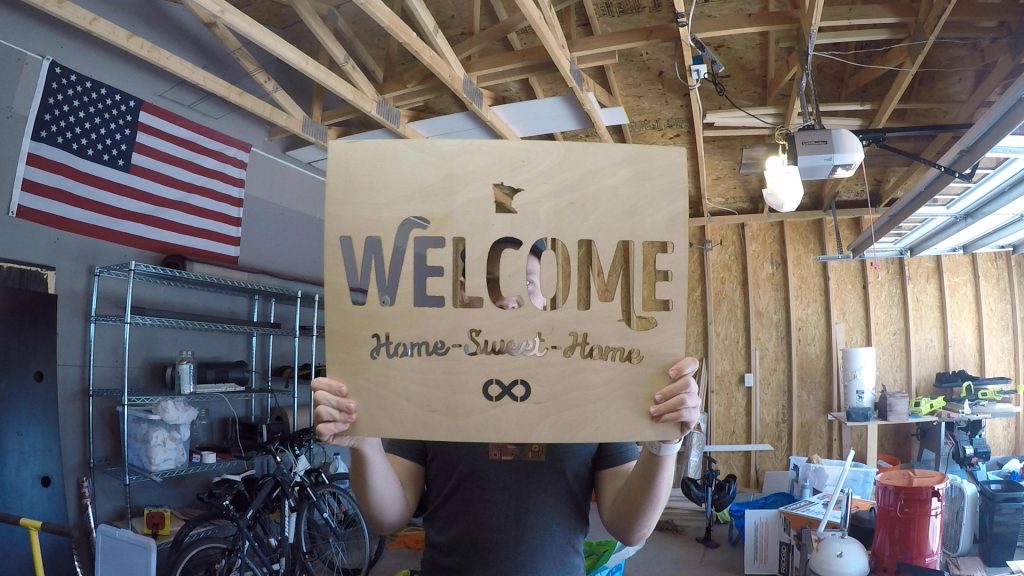
After completing my template, it was time to get started actually working on the welcome mat itself.
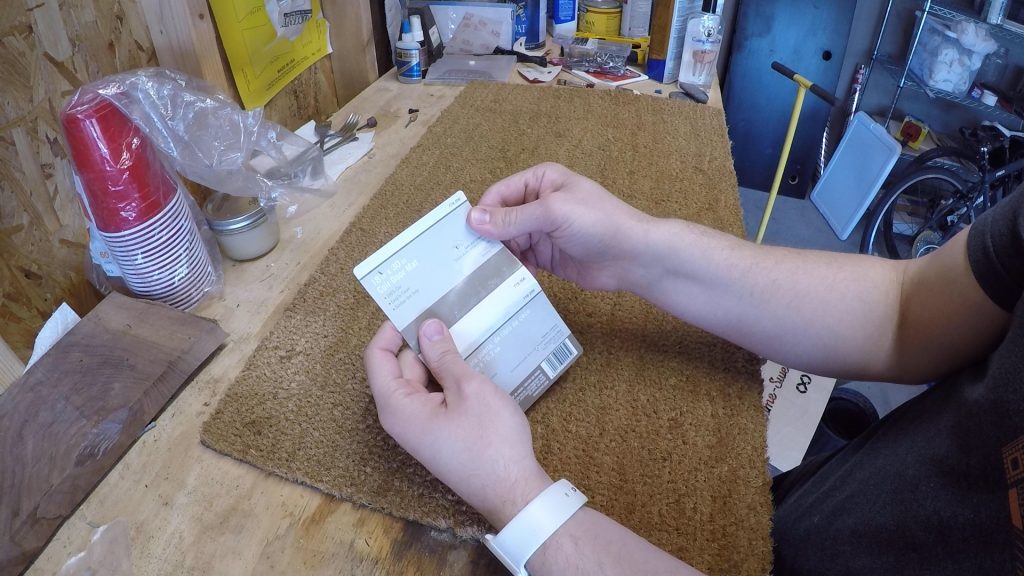
I used an 18×30 inch coir door mat. I think this cost $9 or $10 dollars at the Home Depot. Super cheap because it doesn’t have any design; there were some other ones there that had a design that were more expensive, but we want basic because we’re going to make it our own with our template.
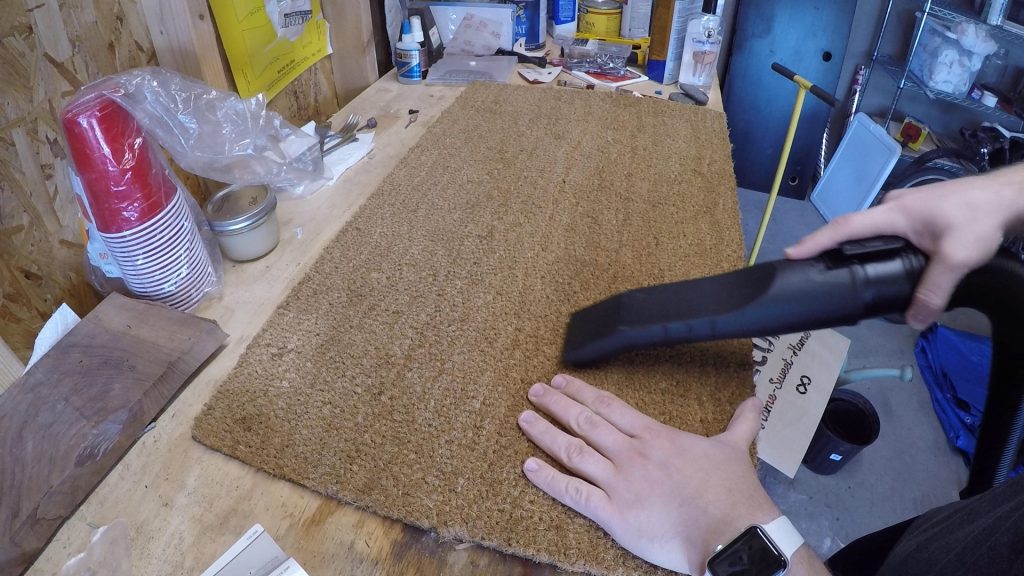
So before getting started I decided to give this a quick vacuum in case there were any loose fibers or dirt so that it wouldn’t interfere with the paint once we got started.
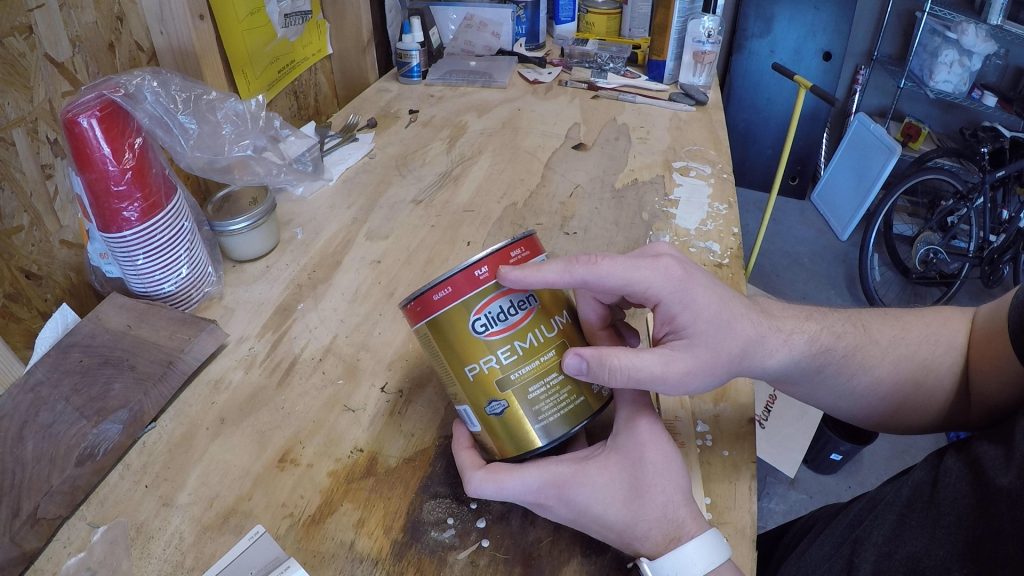
As for paint I just grabbed a small can of Glidden premium exterior paint and had them tint it black for me. I got flat because I don’t want the design to be glossy and look weird.
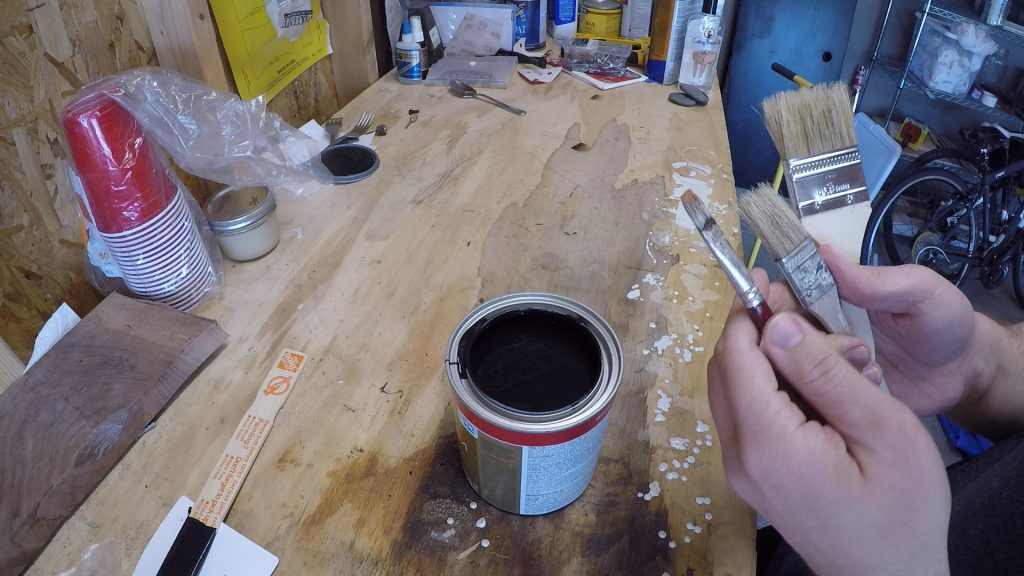
For paint brush, I had a few options at hand because I wasn’t sure what was going to work best.
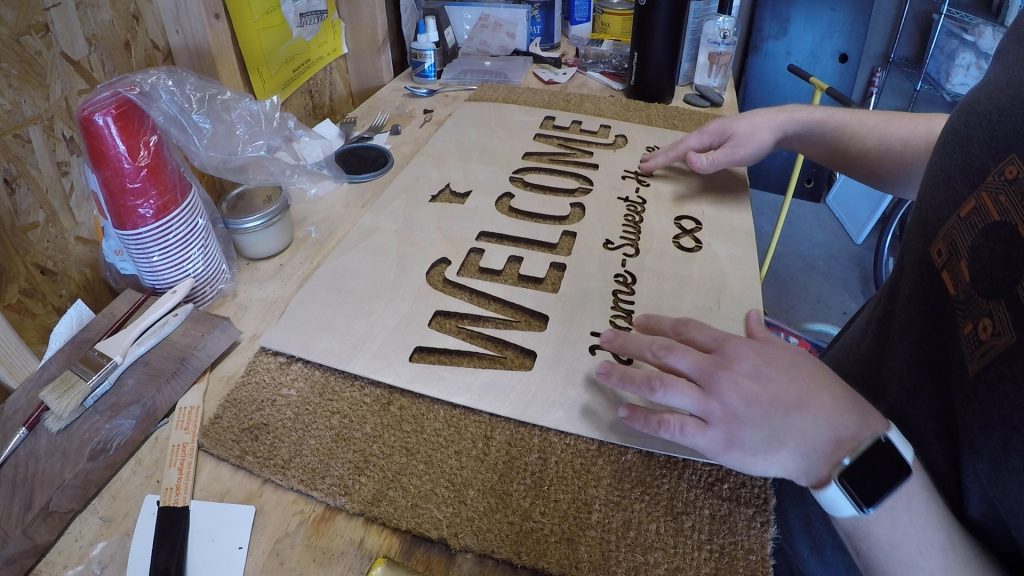
So as I was setting up the template, I realized one of the things I was worried about was definitely going to be a problem. And that was the template not wanting to stay down flat in certain spots. I was thinking I could maybe use a staple gun to staple the template to the rug, but I don’t think that would be able to “grab on” to anything.
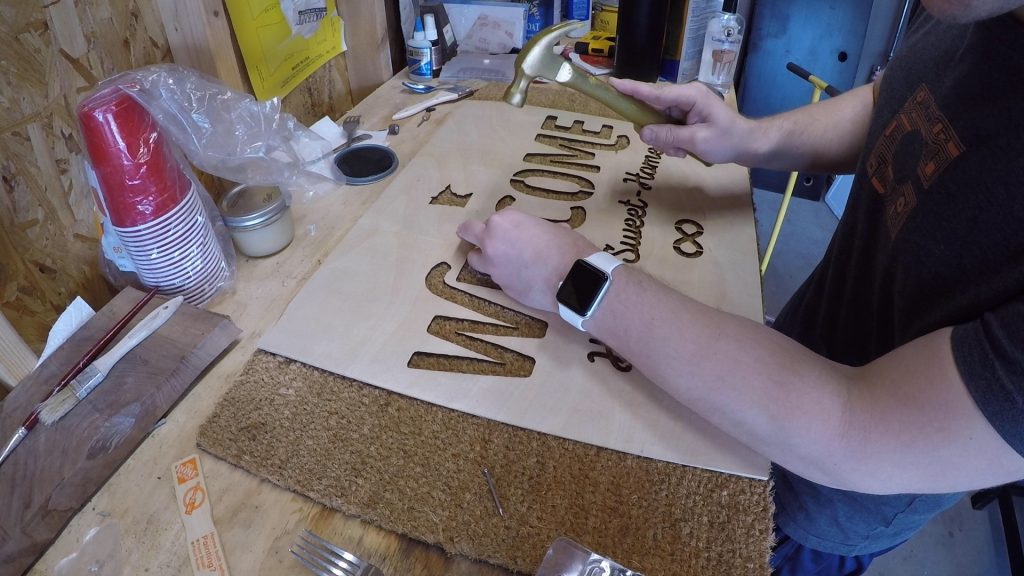
What I decided to do instead may sound a little crazy or hacky at first, but hear me out. I decided to nail it down to my work bench, right through the template, rug and all.. For one thing, I figured this would give me optimal hold-down and make sure it wouldn’t move between coats. And if there are a few holes on the bottom of the rug at the end, it wouldn’t be big deal because it was just for us and it could realistically even help with water drainage since this is an outdoor rug.
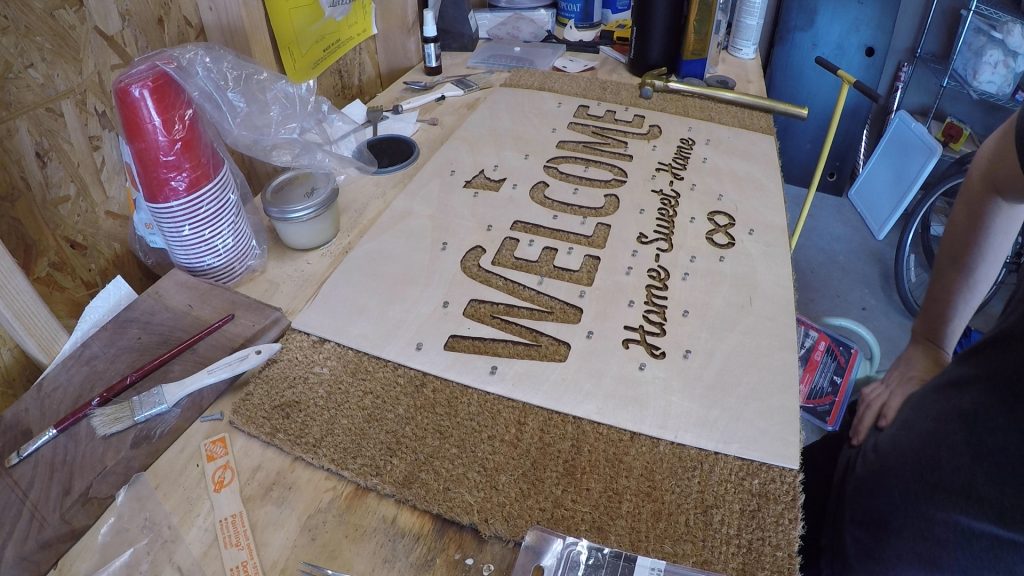
After getting the template and rug secured to the table with a “few” nails and your standard run of the mill hammer, I was ready to get painting.
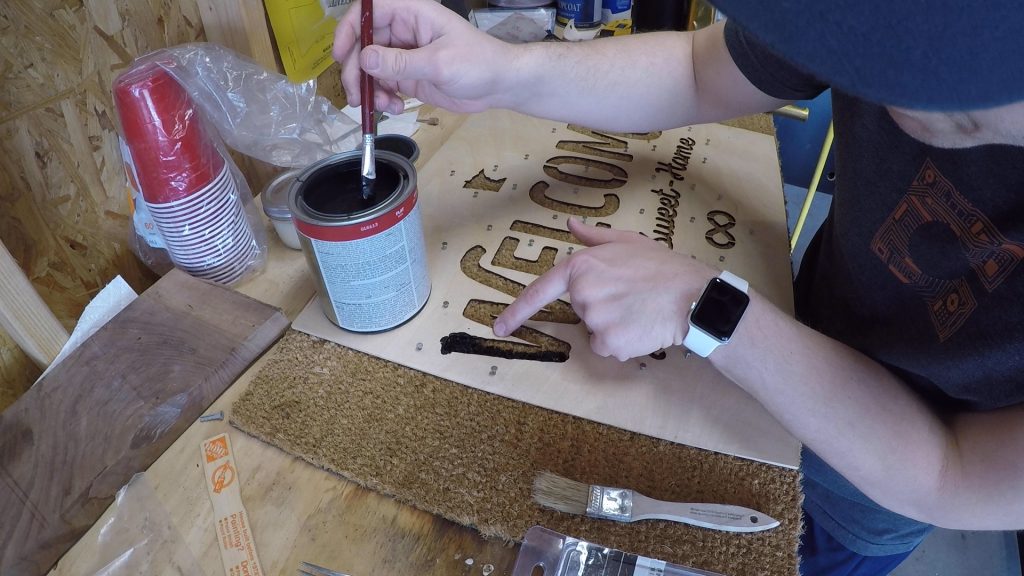
I discovered that I needed to be extra careful around the pointy bits inside the “W” and the “M”, as these pieces were really too thin to put a nail through. In fact, I almost broke them off trying. So this involved me basically holding them down manually with my finger as I painted around them, really carefully. I ended up going with the smallest, stiffest brush I had because these coir fibers were actually quite stiff themselves and the thick bristles of my brush helped to really press the paint down in there. When thinking this project up, I had considered using spray paint but I worried that would be just a surface coat and not get any paint below the surface of the rug. And I figured that might help with longevity so that it doesn’t rub off after a year of use. But, we’ll see how that theory plays out in the long run.
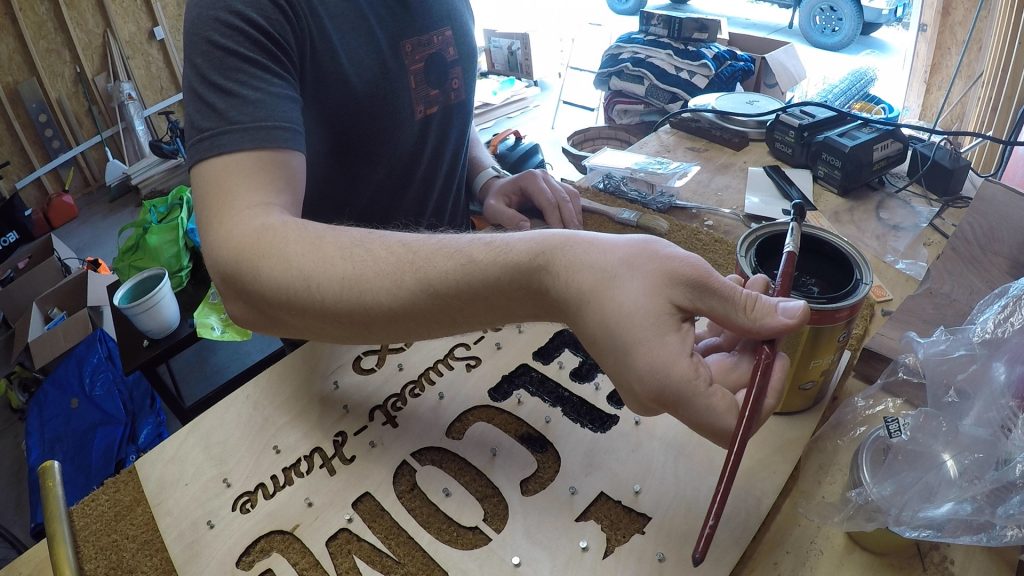
So it was really just a matter of getting paint over all the letters and pushing it down there. I discovered that with the amount of paint I ended up needing to make it saturated, that it was best to sort of scoop the paint up with the brush and press it down in there, so there really wasn’t any dabbing excess paint off along the rim of the can like you normally might. The first coat was a little slow going, but, not terrible.
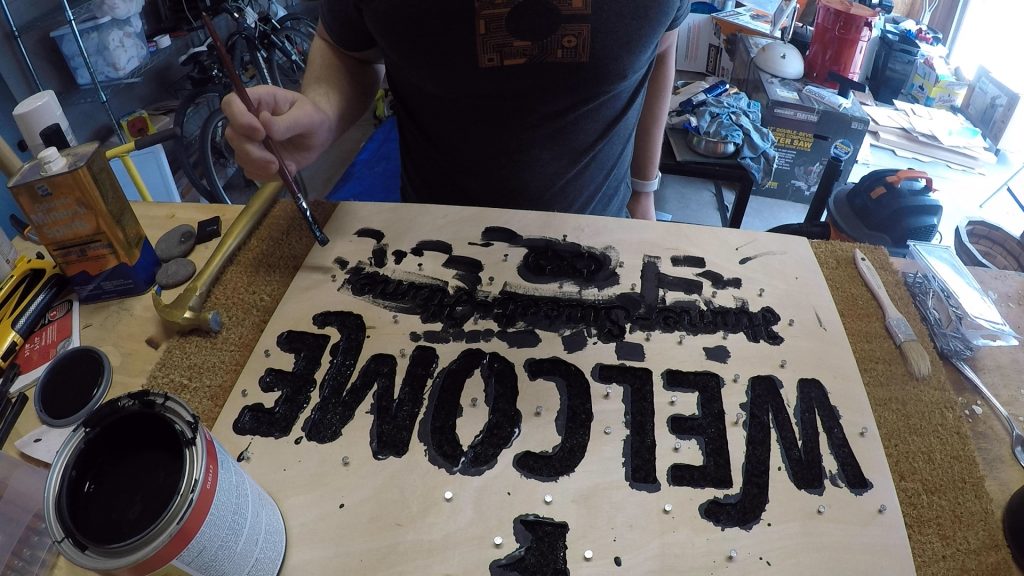
The smaller letters were harder to work with, as there just wasn’t as much room for the brush to do its work. So what I did was really pool the paint into the letters and give it a moment to seep down into the rug on its own before dabbing out the excess. I would have left it in there but I was worried that left for too long it could seep underneath my template, and ruin the whole rug.
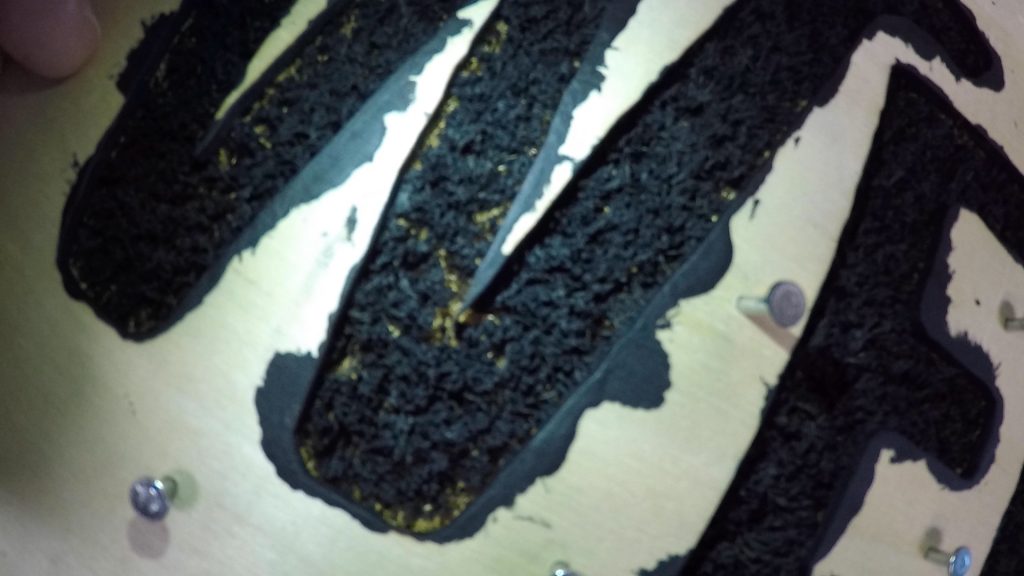
After the first coat, I let it dry for a day or two in the shop. The can says 2-4 hours between coats, but that’s assuming a thin coat on your wall, not thick saturated fibers like we’ve done here. So I figured the longer dry time would be best. After the first coat I was able to take a look at it up close and see all the areas where my paint didn’t make it the first time around, allowing me to focus on these for the second coat.
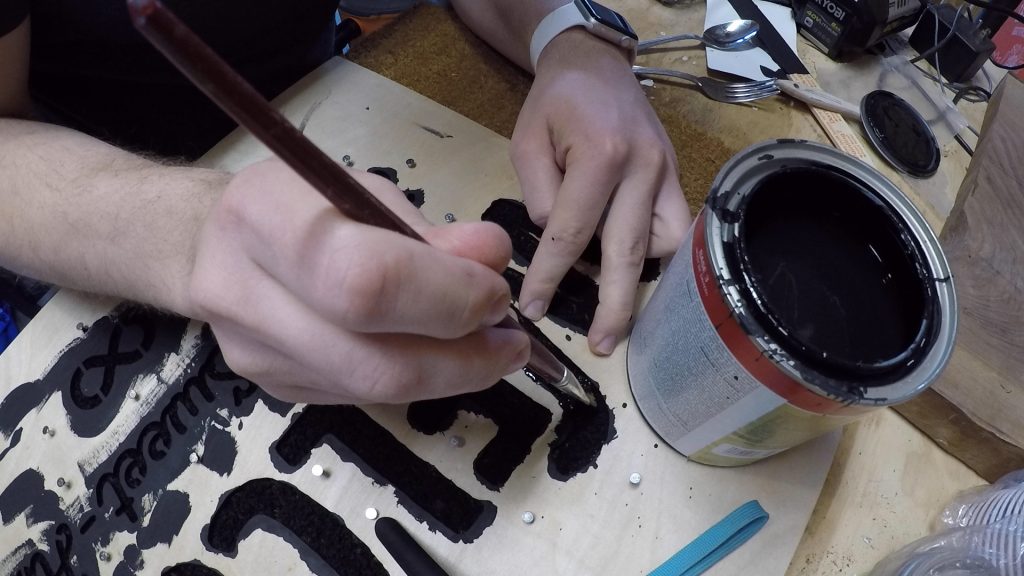
So I got to work on the second coat and focused even more on really pressing the bristles into the rug. I was really hoping to avoid a third coat if I could just because I realized the diminishing returns that would happen with each consecutive coat. What I mean by that is a “seal” is kind of formed by the top layer of paint on the fibers, so no additional paint is going to soak through that, so realistically, doing a single coat would have sufficed if I didn’t have any spots missing paint.
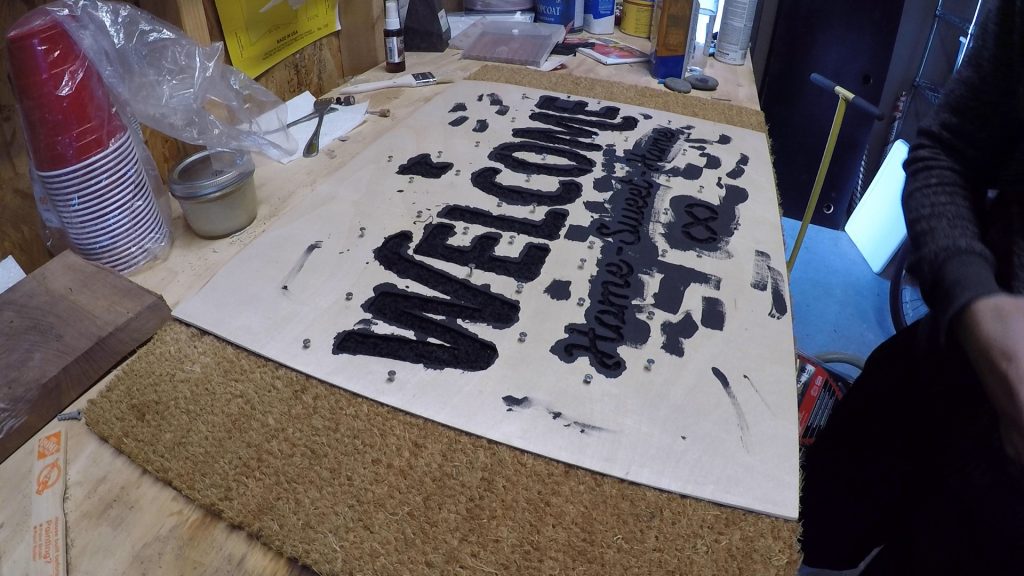
After the second coat, I let it dry for another day or so, as I eagerly awaited getting to see if this worked or not, or if the paint had all seeped underneath my template and it was a complete bust.
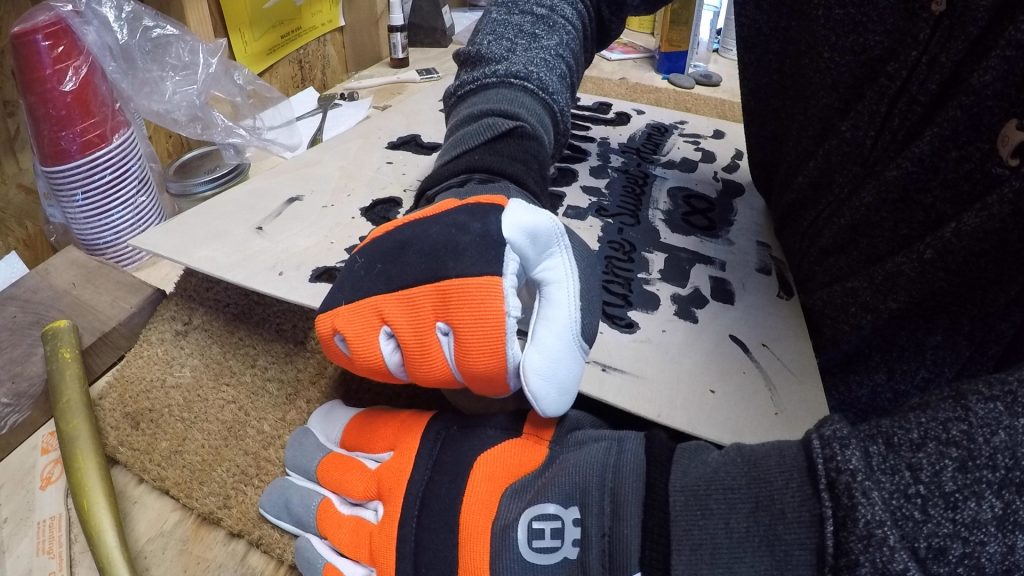
So I removed all the nails that I had foolishly but necessarily applied to keep the template from moving. And discovered when I went to lift it that…it was stuck. Like really stuck. I was trying to pry it up with my bare hands, but I was kind of tearing up my knuckles trying to pry it off so I went to get some gloves to protect my hands.
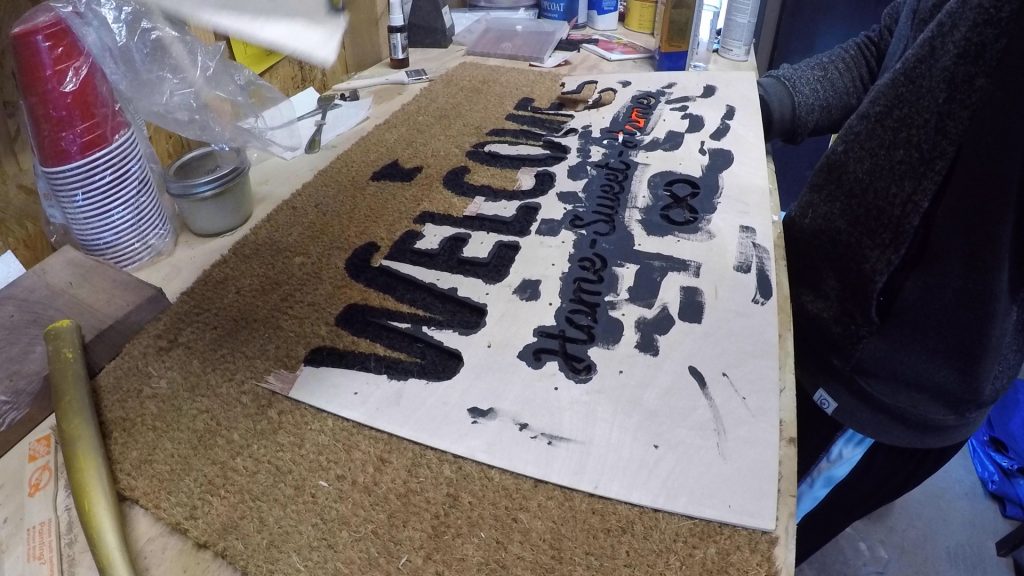
I was trying to get it off the rug all in one piece in case I needed to reuse it for a second attempt but I realized that wasn’t going to happen. The easiest way to get it off would be to break it off in a few different pieces. But as I broke off that first piece, I was pleasantly surprised to see that my approach worked! There was great coverage and definition on the letters and it looked really really good. I was quite pleased.
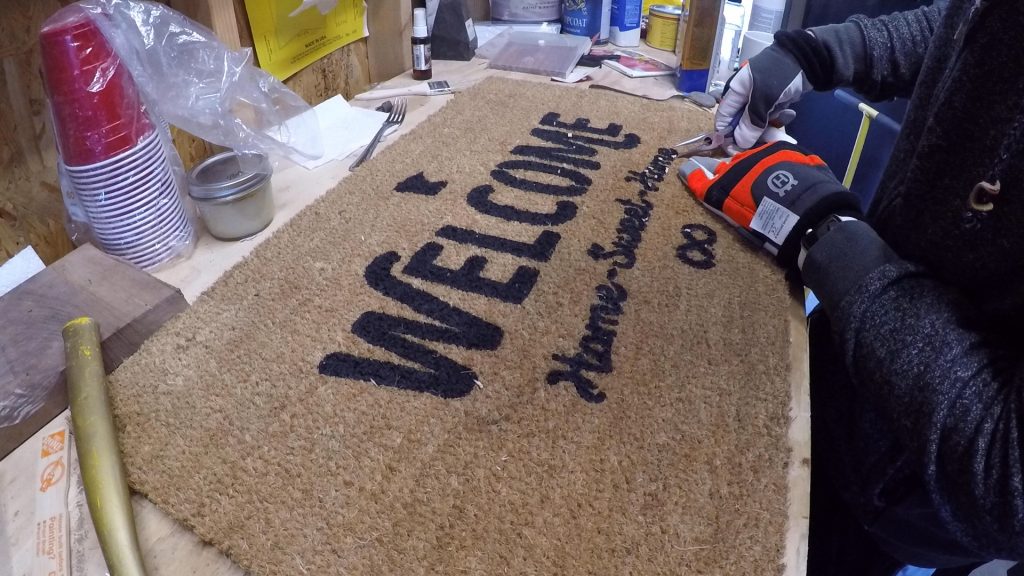
After getting all the large chunks off, there were tiny bits all inside various letters and I had to use a pliers to get at those, since they were kind of stuck to the paint too.
After getting the template completely off, I did notice that the smaller letters at the bottom of the design seemed a little “bolder” than in the original design, so it would appear as though they did bleed a small amount, but they were still legible which is all that matters.
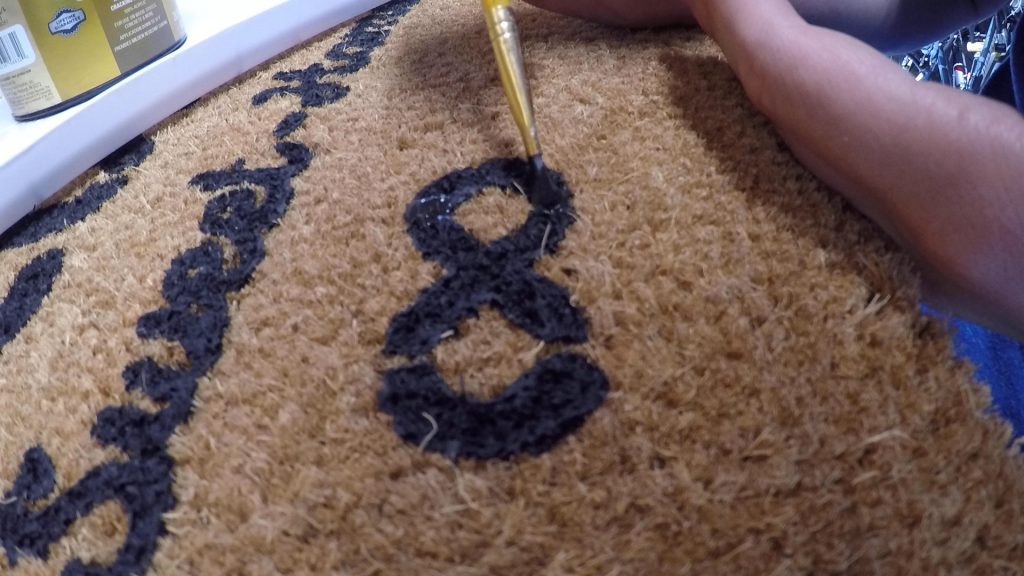
After getting it fully detailed with the pliers, I had one small bit of painting left to do – filling in the template lines that held the inside of the “O’s” and “E’s” and other various letters in place. I decided to just do one coat and was very careful with the brush since I didn’t have any template to guide me.
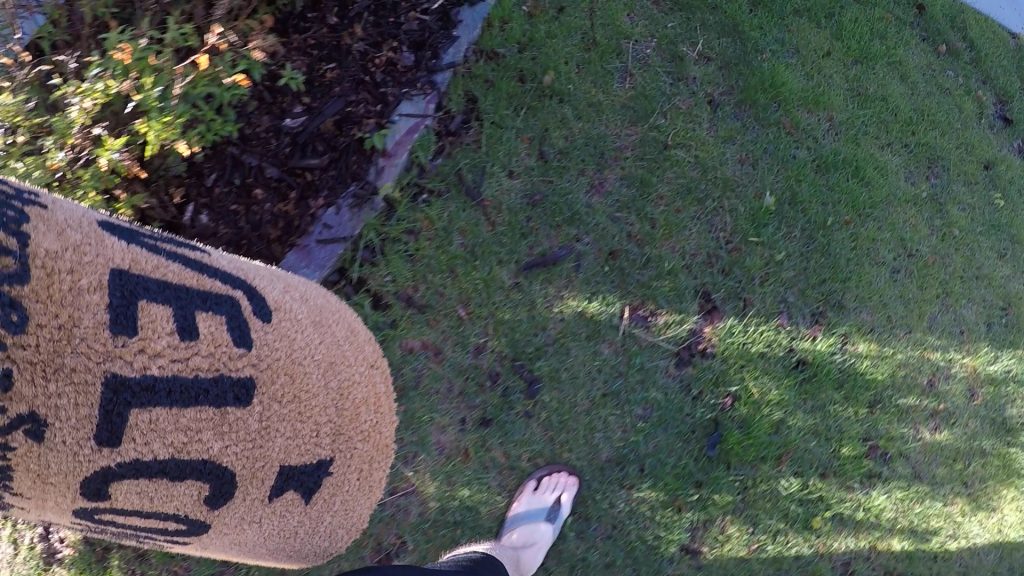
After drying once more, it was time to go put the welcome mat in its new home.
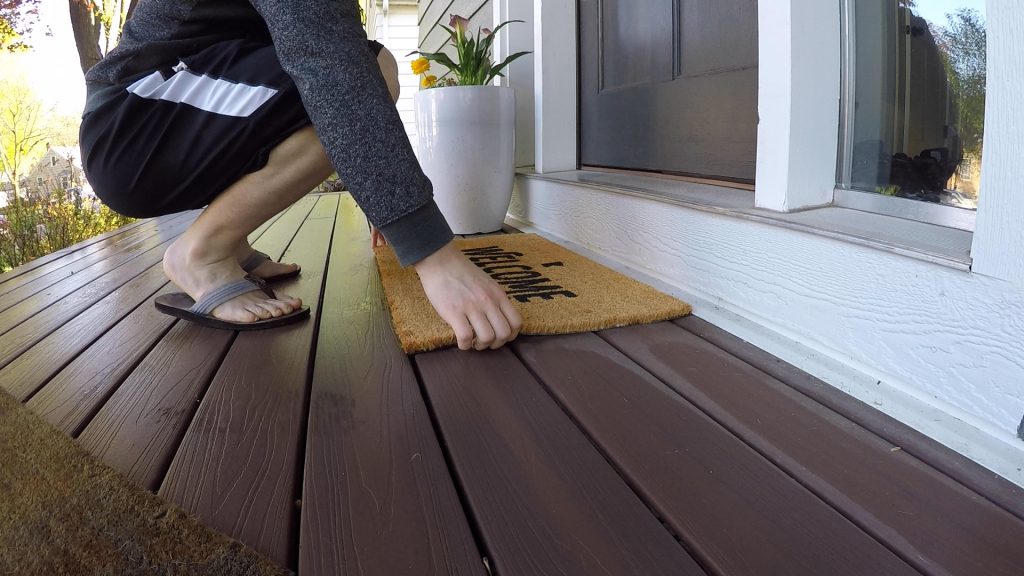
Being a project for our own home, this didn’t have a deadline when I started, but my husband had to go out of town for work for the week, so I thought it would be a nice literal home-coming surprise to have ready for him when he walked up to the door.
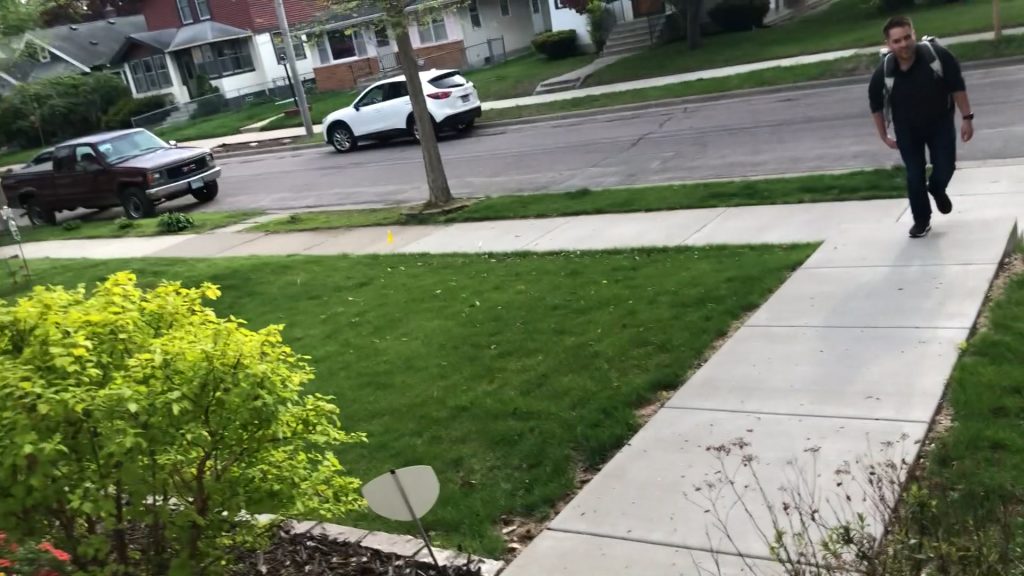
He was scheduled to get home from the airport around the same time as I normally got home from work, so I was hoping to beat him home to catch his reaction from inside the house. But he got home literally as I did so I had to rush up to the steps to catch his reaction with my phone. He must have thought I was trying to race him to the step or something.

But he seemed to have really liked it so acting a little crazy to catch his reaction on video was worth it.
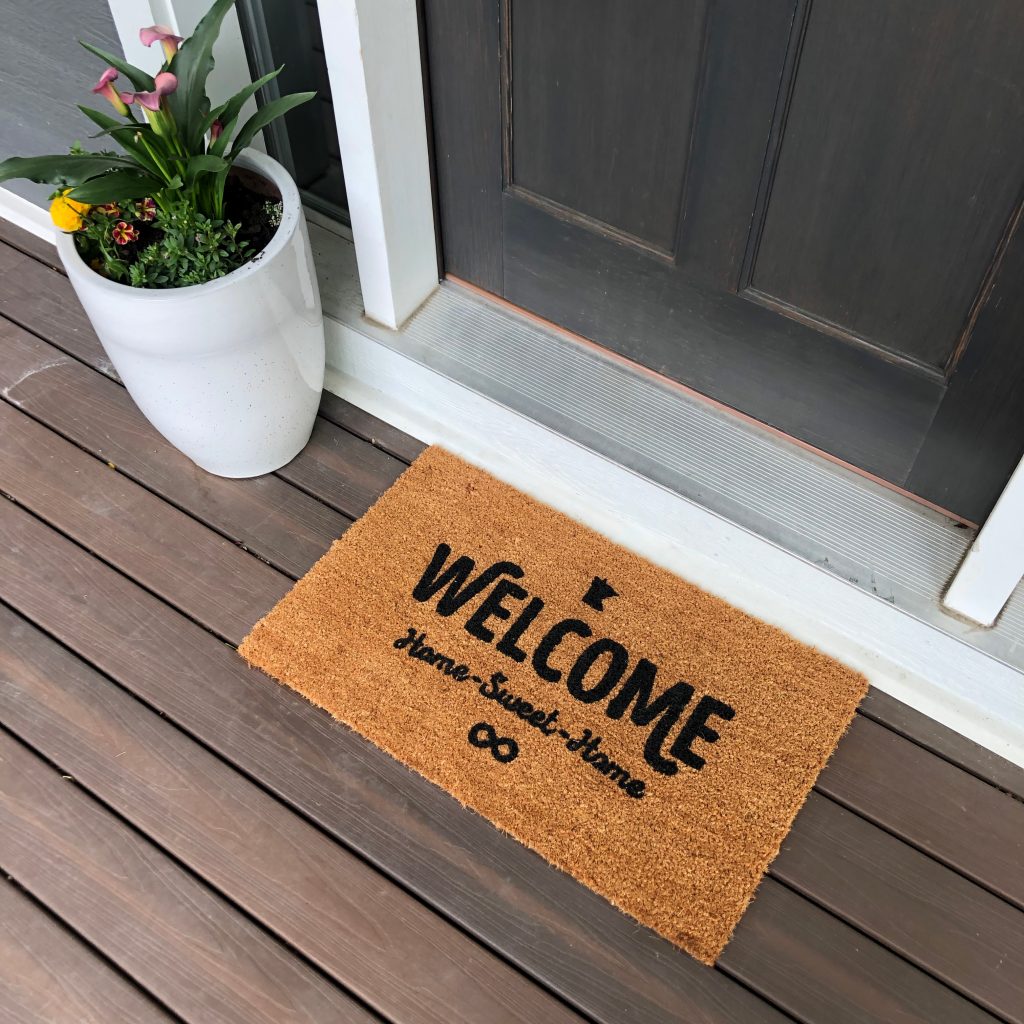
I hope you enjoyed that in-depth look at the process behind me making this custom coir welcome mat! A full build video is available on my YouTube channel so if you’re interested in more of my work, I sure would appreciate if you subscribed.
Thanks for your consideration, and until next time, cheers!
Ready to make a welcome mat for your door?
Below are links to various tools and materials used in this project to get you going. As a heads up, some are affiliate links which allows me to receive a small commission if you buy something, at no extra cost to you. Every little bit helps me continue making videos like this, so I appreciate your support and consideration!
Coir Doormat: https://amzn.to/2Njvpfr
Roofing Nails: https://amzn.to/2pc9oHG
Basic Hammer: https://amzn.to/2WkD0i9
Stiff Craft Paintbrushes: https://amzn.to/2Nn8HDc
Glidden Exterior Black Paint: https://amzn.to/32PHU9a
